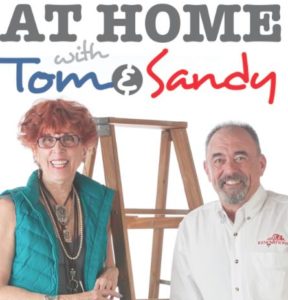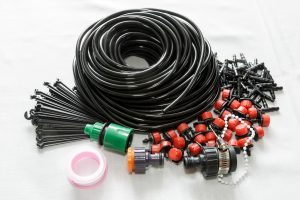We sure do enjoy sharing our words with you. Thanks for being such loyal and great readers!
Sandy: Once again Tom, here we are back in print and landing in mailboxes. I, of course, love all the building officials in our Quad Cities area, but wanted to talk with our readers about a trend we have been seeing at the City of Prescott Building Department that I really like.
Tom: That would be the domain of Ryan Greene, City of Prescott chief building official. Let’s bring Ryan in on the conversation.
Sandy: Ryan, welcome to our little corner of the world!
Ryan: Thanks for the invite. I love talking about our building department and the great team of people we have.
Tom: Awesome, let’s get started with some of the typical questions about permits. Most folks want to hear the numbers in the context of year over year. Can you give our readers an update so they will have a sense of what is happening in town?
Ryan: Certainly! Without boring everyone, generally the number of permits issued varies slightly from month to month and with that being said, generally they are keeping pace with last year.
Sandy: Are the residential and commercial permit numbers about the same?
Ryan: Residential and commercial permit numbers are remaining closely consistent with what was issued out in 2022. However, we are experiencing a slight uptick in commercial construction since the beginning of 2023.
Sandy: So, residential is down just a little. Do you have any thoughts on why that is?
Ryan: It appears as though the majority of residential plats are approaching build out. The city has received some new plats that are either recorded or being recorded this year. That leads me to think we will see an uptick in residential next year.
Tom: Have the challenges facing the construction industry over the past few years played a role?
Ryan: I think so. The cost of materials, labor shortages, combined with a bit of economic uncertainty are all contributing to the different permit numbers.
Sandy: I am hearing the same thing, Ryan. I don’t see the cost of materials going down much, moreover, I see the industry and consumers getting used to them. Ryan, you have been at the helm of the building department in Prescott for just over two years now. Plenty of time to have a solid grip on the challenges the department is facing. Would you share those with our readers?
Ryan: Be glad to. Perhaps the most glaring challenge is keeping up with the workload.
Tom: Give us an idea of what that workload is.
Ryan: Well, so far this year, we have issued 844 permits through June, with about 100 of those being new single-family homes.
Tom: That is roughly 140 permits a month, and the detailed plan reviews that go with that. What staff levels do you have now?
Ryan: We have three plans’ examiners, three field inspectors, and four permit technicians.
Sandy: And you, to pick up the slack! Every time I try to call, you are in the arena of reviewing plans or out in the field looking at challenges. What I really love about you and your team, Ryan, the word “no” is not in your vocabulary – there is always a solution and we so admire that about the City of Prescott development services team.
Ryan: Yeah, well, that’s what we do as a team. Get it done, as I say.
Tom: Holy Smokes! That is averaging over a 11 sets of plans a week per person. I know that a set of plans for health care, especially inpatient, can grow to over a couple hundred sheets per set and that doesn’t include the 500-page tome that are the specifications book. I am impressed!
Sandy: That sounds like a lot of work.
Ryan: Some of the projects we see are complicated and the plans sometimes also get reviewed by other departments and agencies, locally and particularly at the state level. So, yes, these reviews take up a lot of time.
Sandy: You keep a lean staff, that much is for sure.
Ryan: We do. Since the massive layoffs that occurred in this industry back in 2008, across the board agencies are wary about hiring too many people. Seems like a strange conundrum, on the other hand though, it is hard to find qualified people to fill the positions we do have.
Tom: Walking that fine line is tough. As a businessman, that issue was always one of the most difficult to address effectively.
Ryan: As a government organization, we are no stranger to staffing challenges. When one of our team calls in sick or takes a vacation, we really feel the pinch.
Sandy: What are some of your other challenges?
Ryan: Well, the usual issues we face. Our focus is health and safety. That’s why we exist. The private sector does that as well but has the added challenge of costs and time. Sometimes the two experience a difficult way forward. Our goal is to minimize that difficulty.
Sandy: I have seen that. You have put on several seminars and made yourself available to address concerns before they become difficulties.
Ryan: You help us a lot, Sandy, through the YCCA. The members that attend the informational gatherings usually become the folks we don’t have difficulties with moving forward.
Tom: I like the way you use the phrase, “Moving forward.” So, I will use it to ask one last question. Moving forward, what would you like our readers to know about the building department?
Ryan: Well, we like to think we are changing the cultural vibe of our department. We are really focused on trying to help people move their projects forward. Many people are afraid to come to us with their problems regarding codes and regulations. I want to change that.
Sandy: I have always found your door to be open and have heard great things from contractors and people about the department’s helpfulness. Several folks have come to me wondering what they should do about a problem they are having. The issues they raise include questions about when they need to get a permit, to the OMG’s where they want to remodel a house they lived in for 10 years and come to find out previous work was not permitted.
Tom: That can be scary!
Ryan: I get it. It can be scary. We want to find a way to make people’s goals be realized, not be the agency that makes more problems for you. If you come to us with any construction issue, our team will work with you to find a solution.
Sandy: I like that! A solution-oriented building department. Ryan this has been informative and refreshing. As always let me know how the Yavapai County Contractors Association can help.
Tom: Our region is growing and there is no doubt about it – the housing market and the construction industry are two strong sectors keeping our economy going.
Sandy: Ryan, you and your team like Tony The Tiger says, “G-R-E-A-T!”
Thanks for stopping in to read At Home with Tom and Sandy. You are in good company and we love sharing educational, fun and important information with you. QCBN
Sandy Griffis, Executive Director, Yavapai County Contractors Association, 928-778-0040.
Tom Reilly, Architect, Renovations, 928-445-8506 renovationsaz.com
Remember to tune in to YCCA’s Hammer Time every Saturday and Sunday morning 7 a.m. on KQNA 1130 AM/99.9 FM/95.5FM or the web kqna.com. Listen to Sandy and Mike talk about the construction industry and meet your local community partners. Hammer Time is a great way to start your weekend.









